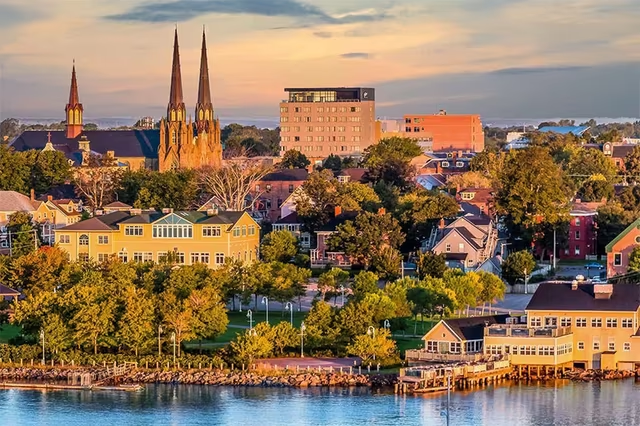My Bookings
Please Enter Your Booking Code To Find Your Booked Tour!

Exploring Prince Edward Island National Park
Table of Contents
Exploring Prince Edward Island National Park offers a journey through one of Canada’s most picturesque coastal landscapes. Stretching along the northern shore of Prince Edward Island, this national treasure is a haven of red sandstone cliffs, wind-shaped dunes, and rich Acadian forests. Beyond its natural beauty, the park is deeply rooted in cultural heritage, with historic sites like Green Gables and Dalvay-by-the-Sea reflecting the island’s storied past. Divided into three distinct regions—Cavendish–North Rustico, Brackley–Dalvay, and Greenwich—each area presents its own unique charm and ecological wonders. Full of wildlife, scenic trails, or literary history, this park is a rewarding escape.
Why is Prince Edward Island National Park Famous?
Prince Edward Island National Park showcases a rare blend of natural features shaped by time, tide, and wind. From rust-red sandstone cliffs and sweeping white sand dunes to wind-sculpted dunes, freshwater ponds, salt marshes, and remnants of ancient Acadian forests—this park is a microcosm of Atlantic Canada’s diverse coastal beauty.
Iconic Red and White Sand Beaches
What sets this park apart are its dramatic beaches. Whether it's the vivid red sands of Cavendish or the soft white shores of Greenwich, the contrast between water and land is striking.
A Sanctuary for Endangered Species
Home to more than 300 species of birds and over 400 plant species, the park plays a vital role in protecting biodiversity. It serves as critical habitat for endangered and threatened species like the Piping Plover, American eel, and Saint Lawrence Aster.
History, Heritage, and the World of Anne
Few places blend nature and storytelling like Prince Edward Island National Park. The Cavendish region is home to Green Gables Heritage Place, where L.M. Montgomery’s beloved novel Anne of Green Gables was set. Other heritage sites such as Dalvay-by-the-Sea and Fort Amherst highlight the region’s colonial, Mi’kmaq, and Acadian history.
Book your private PEI adventure today
Perfect for Families and Outdoor Lovers
Whether you're planning a weekend getaway or a full summer escape, PEI National Park is built for memorable moments. Families can camp steps from the ocean, enjoy supervised beaches, explore easy cycling trails, and take part in interpretive programs or local festivals.
Park Regions Overview
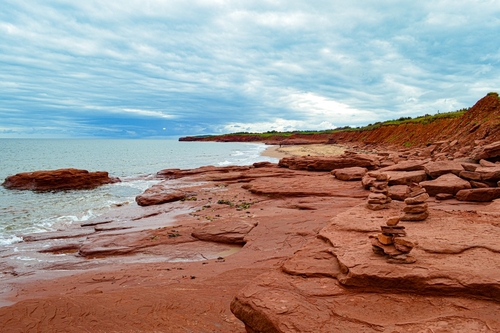 Prince Edward Island National Park is divided into three distinct regions—Cavendish–North Rustico, Brackley–Dalvay, and Greenwich—each offering its own blend of landscapes, history, and recreational experiences.
Prince Edward Island National Park is divided into three distinct regions—Cavendish–North Rustico, Brackley–Dalvay, and Greenwich—each offering its own blend of landscapes, history, and recreational experiences.
Cavendish–North Rustico
Cavendish Beach
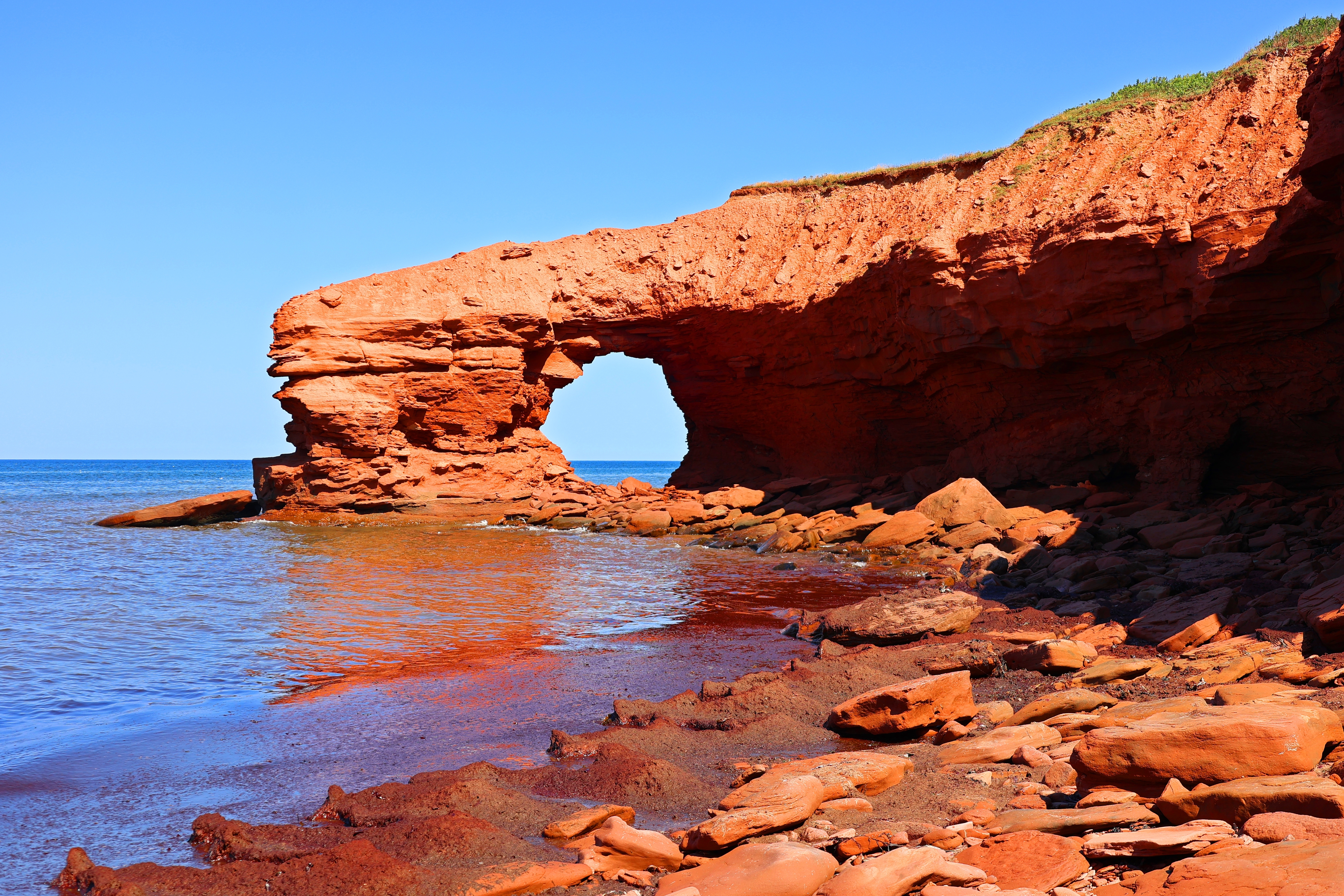 One of the most iconic beaches on Prince Edward Island, Cavendish Beach is famous for its red sand beaches, scenic sunsets, and warm, shallow waters.
One of the most iconic beaches on Prince Edward Island, Cavendish Beach is famous for its red sand beaches, scenic sunsets, and warm, shallow waters.
Green Gables Heritage Place & Haunted Woods Trail
Step into the world of Anne of Green Gables at this literary landmark. The restored Victorian home and surrounding trails—including the Haunted Woods—let you walk through the imagination of author L.M. Montgomery.
Discover PEI’s top sights on a small-group tour
#### Cavendish Cliffs
These dramatic, red sandstone cliffs frame the coastline and offer stunning views that contrast beautifully with the deep blue waters below.
Cavendish Grove
Once an amusement park, Cavendish Grove is now a peaceful picnic and walking area known for its rare stand of sugar maple trees.
Cavendish Dunelands Trail
This scenic trail begins at the Cavendish Visitor Centre and leads across a floating boardwalk with panoramic views of sand dunes, freshwater ponds, and the ocean.
Brackley–Dalvay
Brackley and Stanhope Beaches
These popular and accessible beaches are ideal for swimming, beachcombing, or simply soaking up the sun. Both are supervised in summer and offer amenities such as washrooms, accessible ramps, and mobility-friendly features like beach wheelchairs.
Dalvay-by-the-Sea National Historic Site
This grand Victorian estate, once a summer home for an oil tycoon, is now a seasonal inn rich in character and history. Fans of Anne of Green Gables may recognize it as the fictional White Sands Hotel from the 1985 film.
Robinsons Island Trail System (R.I.T.S.)
Designed with families and cyclists in mind, this looped trail offers packed gravel paths, gentle slopes, and optional technical features for beginner to intermediate riders. Birdwatching lookouts and interpretive signage make it a well-rounded experience for all ages.
Bubbling Springs and Farmlands Trails
Short and easy, these trails meander through woodlands and wetlands, providing peaceful escapes and glimpses of local wildlife.
Gulf Shore Way East
This 10-km paved trail runs along the coast between Brackley and Dalvay. It’s ideal for walking, jogging, or cycling and offers continuous views of dunes, salt marshes, and the sparkling Gulf of St. Lawrence.
Greenwich
Greenwich Dunes
One of the most ecologically significant areas of the park, Greenwich is home to rare parabolic dunes found nowhere else in North America.
Greenwich Beach
A pristine and remote beach accessible via trails, Greenwich Beach offers a quiet, less-crowded alternative for beachgoers.
Greenwich Interpretation Centre
This award-winning centre features over 20 multimedia exhibits that delve into 10,000 years of Indigenous and Acadian history, local ecosystems, and archaeological discoveries.
Tlaqatik & Havre Saint Pierre Trails
These interconnected trails provide a deeper understanding of the land’s cultural heritage and natural beauty. Tlaqatik Trail offers views of St. Peters Bay, while Havre Saint Pierre Trail highlights the link between the Mi’kmaq and the landscape they’ve called home for millennia.
What is there to do in Prince Edward Island National Park?
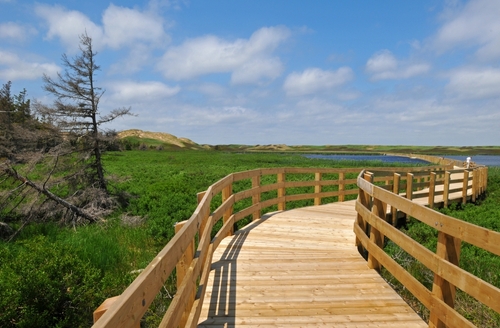 From sun-soaked beaches to forested trails and peaceful paddling routes, Prince Edward Island National Park offers a wide range of outdoor activities for nature lovers, families, and adventure seekers alike. There's no shortage of things to do in this Atlantic Canada gem.
From sun-soaked beaches to forested trails and peaceful paddling routes, Prince Edward Island National Park offers a wide range of outdoor activities for nature lovers, families, and adventure seekers alike. There's no shortage of things to do in this Atlantic Canada gem.
Beaches and Swimming
The park’s coastline is home to some of the most inviting beaches in Eastern Canada. These long stretches of red and white sand, backed by dunes and framed by cliffs, are perfect for relaxing or active beach days.
Supervised Beaches in PEI National Park:
- Cavendish Beach – Known for its iconic red sands and stunning sunsets
- Brackley Beach – Easily accessible with soft sand and warm waters
- Greenwich Beach – A more secluded, tranquil setting near the dunes
- Stanhope Beach – Family-friendly with accessible beach features
- Ross Lane Beach – Quieter option near Stanhope, ideal for peaceful swims
Hiking and Biking
PEI National Park boasts a variety of trails that wind through forests, wetlands, dunes, and along the scenic coast. These trails range from easy strolls to moderate hikes, each offering unique views and opportunities for wildlife spotting.
Top Hiking & Biking Trails:
- Greenwich Dunes Trail (4.5 km) – Features a floating boardwalk, interpretive signs, and access to rare parabolic dunes
- Cavendish Dunelands Trail (2.3 km one way) – A serene walk across ponds and coastal landscapes
- Gulf Shore Way (10 km paved path) – Perfect for cyclists and joggers, this coastal route offers continuous views of salt marshes and the Gulf
- Robinsons Island Trail System (5 km loop) – A family- and bike-friendly trail with technical mountain biking features and wildlife lookouts
Camping
Camping in PEI National Park is a popular way to immerse yourself in its natural beauty. Whether you're in a tent, RV, or roofed accommodation, the park offers well-serviced sites to suit every preference.
Cavendish Campground:
- Over 200 sites (serviced and unserviced)
- Family-focused amenities including a playground, washrooms, and laundry
- TENTik (wood-frame tent-cabin hybrids) and Bunkies available
Direct access to the beach and nearby trails like the Homestead and Dunelands
Stanhope Campground:
- A quieter setting with around 100 sites
- Access to Gulf Shore Way Trail and Stanhope Beach
- Mixture of unserviced and serviced lots
- Beach features include accessible ramps and beach wheelchairs
Kayaking, Canoeing & Paddling
For those who enjoy exploring by water, PEI National Park offers ideal conditions for non-motorized boating.
Where to Paddle:
- Calm inland ponds and waterways are perfect for beginners
- The Gulf of St. Lawrence offers a more challenging experience for seasoned paddlers
Paddling Tips:
- Only non-motorized boats are permitted within the park, preserving tranquility and safety
- Always check wind and tide conditions before setting out, especially on the Gulf
- Paddling in the early morning or evening often provides the best wildlife viewing
Fishing
Fishing is a peaceful and rewarding way to enjoy the natural surroundings of the park, but regulations vary depending on location.
Freshwater Fishing:
- Freshwater fishing requires a Parks Canada fishing license.
- It is permitted in specific ponds and rivers within the park.
- Contact Parks Canada for season dates and catch limits.
Saltwater Fishing (Gulf of St. Lawrence):
- Saltwater fishing is governed by the Department of Fisheries and Oceans Canada.
- It doesn’t require a fishing license, but regulations apply.
Cycling
With smooth paths and breathtaking scenery, cycling is one of the best ways to explore Prince Edward Island National Park.
Gulf Shore Way Trail (10 km):
- Paved, family-friendly trail running along the coast.
- Ideal for casual cycling, jogging, or rollerblading.
- Offers interpretive signage and benches along the route.
Robinsons Island Trail System (R.I.T.S.):
- Designed for mountain bikers of all skill levels.
- Features include wooden bridges, exposed roots, optional technical elements, and scenic lookouts.
- Also popular with walkers and families looking for a less intense ride.
Wildlife and Natural Wonders
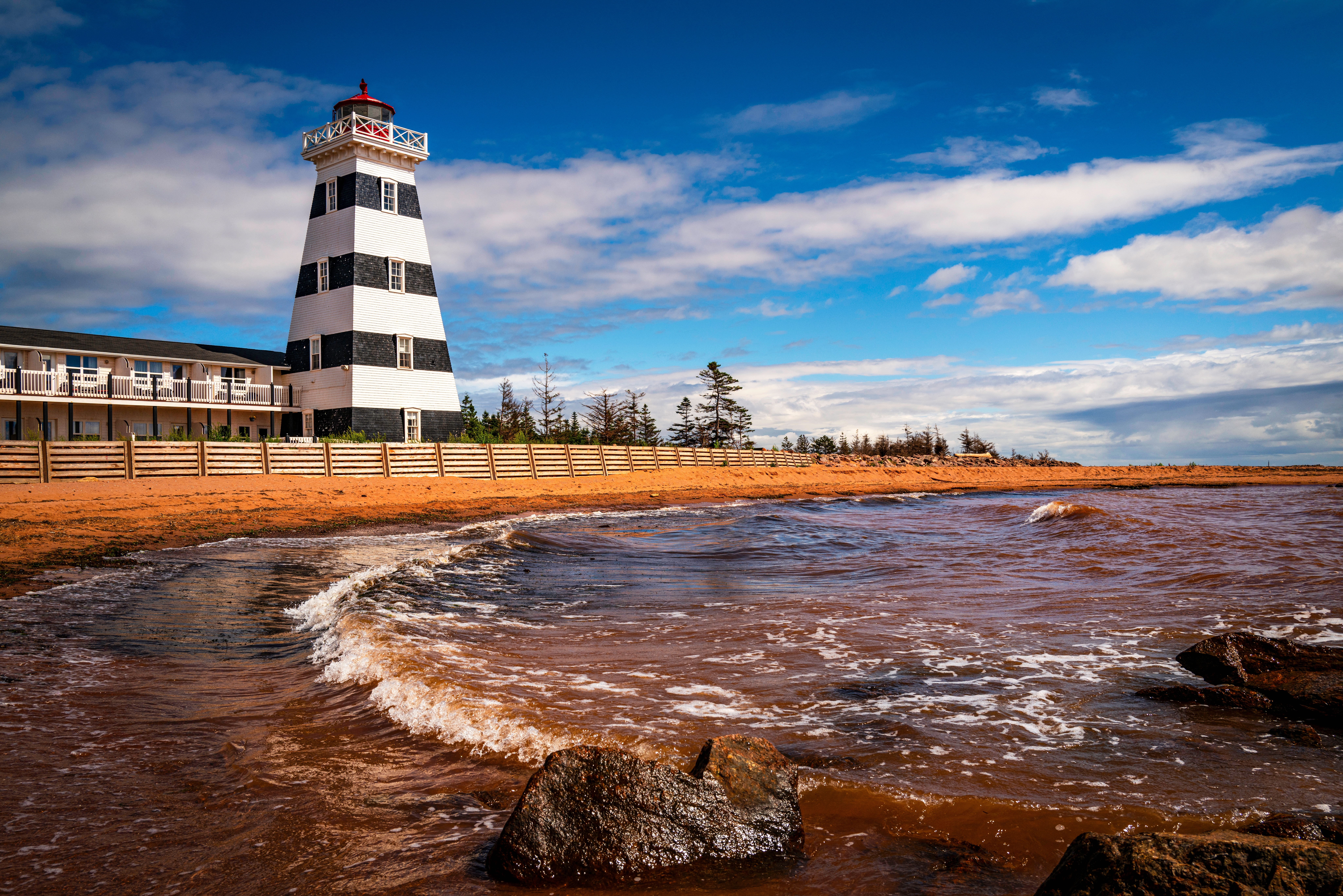 Prince Edward Island National Park is more than just a picturesque coastal escape—it’s an ecological treasure trove teeming with biodiversity and dramatic natural features.
Prince Edward Island National Park is more than just a picturesque coastal escape—it’s an ecological treasure trove teeming with biodiversity and dramatic natural features.
Sanctuary for Endangered and Threatened Species
The park plays a crucial role in protecting several vulnerable species. Most notable is the Piping Plover, a small shorebird that nests on the park’s sandy beaches. Visitors may notice temporary beach closures in nesting areas—these are vital conservation efforts to protect this endangered bird.
Over 700 Species Call the Park Home
Prince Edward Island National Park boasts over 300 species of birds and 400 species of plants. Red foxes, raccoons, and beavers are often spotted, and the park plays an essential role in migratory bird pathways during spring and fall.
Acadian Forests and Coastal Wetlands
Remnants of the Acadian Forest biome can still be found within the park—featuring a mix of hardwoods and softwoods rarely seen together. Cavendish Grove is particularly notable for its rare stand of sugar maple trees, offering both ecological and aesthetic value.
Iconic Red Sandstone Cliffs
Towering over the Gulf of St. Lawrence, the park’s red sandstone cliffs are one of its most striking geological features. Formed over millions of years from compressed sediment rich in iron oxide, these cliffs oxidize when exposed to air, giving them their signature rust-red hue. Viewpoints along Cavendish Cliffs and the Gulf Shore Way provide stunning panoramic scenes—especially during sunset.Parabolic Dunes at Greenwich
Perhaps the most unique natural formation in the park is found in the Greenwich Dunes, home to rare parabolic dunes—a shape and size of dune system seldom seen in North America. These moving dunes create counter ridges and ridgelines that shift with wind and time. A floating boardwalk allows visitors to explore the dunes without disturbing their fragile ecosystem.
The Gulf of St. Lawrence
The park stretches along the north shore, facing the Gulf of St. Lawrence—one of the world’s oldest estuaries. The Gulf not only provides breathtaking seascapes but also supports marine life, including seals and migratory whales, and serves as a key link between the Great Lakes and the Atlantic Ocean.
Cultural and Historic Sites
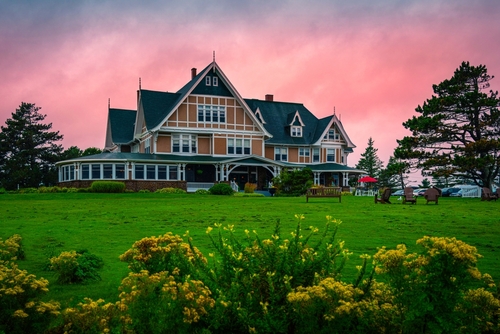 While Prince Edward Island National Park is best known for its beaches and dunes, its cultural heritage is just as compelling. From Mi’kmaq history and early European settlements to the literary legacy of Anne of Green Gables, the park offers a deep, immersive experience that connects past and present.
While Prince Edward Island National Park is best known for its beaches and dunes, its cultural heritage is just as compelling. From Mi’kmaq history and early European settlements to the literary legacy of Anne of Green Gables, the park offers a deep, immersive experience that connects past and present.
Green Gables Heritage Place
One of the most visited literary landmarks in Canada, Green Gables Heritage Place brings Lucy Maud Montgomery’s world-famous novel Anne of Green Gables to life. Located in Cavendish, this restored Victorian farmhouse inspired the fictional home of Anne Shirley, the red-headed heroine beloved by readers worldwide.Dalvay-by-the-Sea National Historic Site
Nestled in the Brackley–Dalvay region, Dalvay-by-the-Sea is a stunning Queen Anne Revival-style mansion that once served as a summer residence for a wealthy American oil tycoon. Today, it functions as a seasonal inn and restaurant, offering guests a glimpse into late 19th-century elegance by the sea.
Port-la-Joye–Fort Amherst National Historic Site
This site marks the first permanent European settlement on Prince Edward Island. Originally a French outpost, it later became a British fortification. Today, visitors can explore the grassy remnants of the fort, read interpretive panels, and enjoy panoramic views of Charlottetown Harbour.
The site also honors the Mi’kmaq–Acadian alliance, a significant chapter in early Canadian diplomacy and cultural exchange.
Ready to explore Charlottetown’s rich history and vibrant streets on a fun, guided walking tour?
Ardgowan National Historic Site
This picturesque property in Charlottetown was once the home of William Henry Pope, one of the Fathers of Confederation. Though not within the park itself, Ardgowan is an essential stop for those exploring the broader heritage of PEI.
Visitors can stroll through its serene Victorian gardens, take in the restored Gothic Revival-style cottage, and learn about Canada’s political formation.
Province House National Historic Site *(Reopening Fall 2025)*
Known as the “Birthplace of Confederation,” Province House is where the 1864 Charlottetown Conference was held—an event that laid the groundwork for the creation of Canada. It’s also home to the PEI Legislative Assembly.The site is currently undergoing restoration, with new exhibits set to reopen in late 2025. These will explore untold stories of Indigenous peoples, women, and minorities—offering a more inclusive lens on Canadian history.
L.M. Montgomery’s Cavendish National Historic Site
Beyond Green Gables itself, the broader Cavendish area—including the author’s family home site, grave, and schoolhouse—has been designated as a National Historic Site. Interpretive panels and guided tours connect Montgomery’s personal history to her fictional works and give visitors a deeper sense of her roots in the PEI landscape.
Final Thoughts
Prince Edward Island National Park is more than just a scenic destination—it’s a living landscape where natural beauty, rich heritage, and outdoor adventure converge. From red sandstone cliffs and protected dunes to Mi’kmaq history and literary landmarks, the park invites you to slow down, explore deeply, and connect meaningfully with the land.
Whether you're kayaking through quiet bays, walking in Anne Shirley’s fictional footsteps, or sharing a beachside picnic with loved ones, every corner of this park offers something unforgettable.
As you plan your visit, remember to travel gently—respect the trails, protect the wildlife, and honour the stories that came before. PEI National Park isn’t just a place to see; it’s a place to experience, protect, and carry with you long after you’ve left.
Create moments that matter. Leave only footprints. Take home memories that last a lifetime.
Related Blogs

Anne of Green Gables' Destinations to Visit on Prince Edward Island - See Sight Tourss
On your tour de Prince Edward Island? Looking for amazing ways to explore this tiny, yet full of wonders island? Here’s one: explore Anne of Green Gables’ world and try to discern the island from Anne’s vision!

Ayesha Munir

Best places to walk in Prince Edward Island
Discover PEI’s best walking trails, from scenic coastal paths to the iconic Island Walk. Explore nature, history, and stunning landscapes on foot!

Ammara Younas

The Best Time to Visit Prince Edward Island
Discover the ideal seasons for a picturesque escape to Prince Edward Island, Canada's gem, with our guide to the Best Time to Visit PEI.

Sadia Nazar
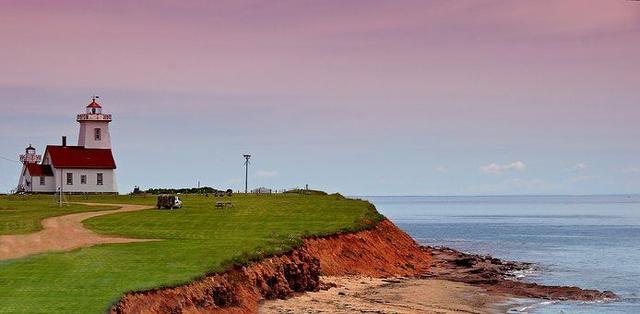
Facts about Prince Edward Island
PEI has got a lot of interesting facts you’d love to know and relate to as you explore this islandly-heaven. Here’s a list of 11 interesting facts about PEI that you should know before you visit.

Ayesha Munir
Related Tours
Quick Links
Book your Tour
Get in Touch
Toll Free
1-888-961-6584
Local
1-289-271-9767
© 2025 See Sight Tours. All Rights Reserved.
1-888-961-6584

